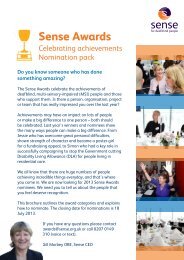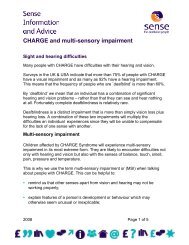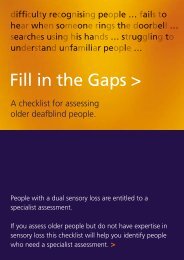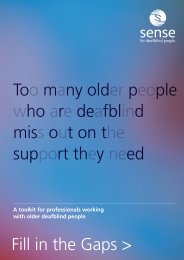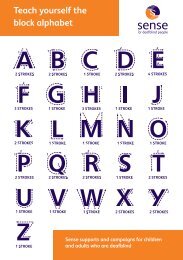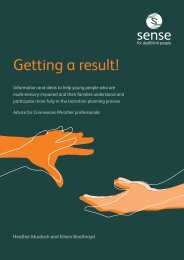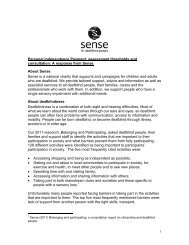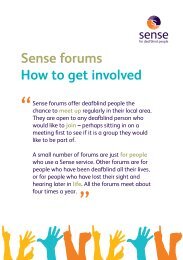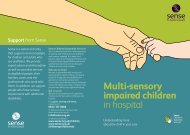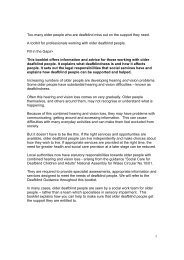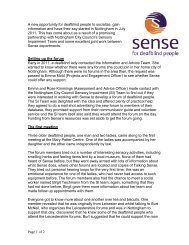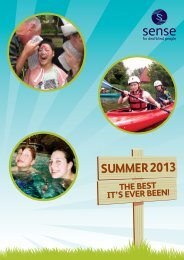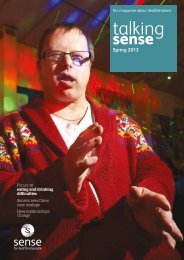MSI Unit Curriculum - Sense
MSI Unit Curriculum - Sense
MSI Unit Curriculum - Sense
You also want an ePaper? Increase the reach of your titles
YUMPU automatically turns print PDFs into web optimized ePapers that Google loves.
<strong>MSI</strong> <strong>Unit</strong> <strong>Curriculum</strong>: Phase 1<strong>MSI</strong> <strong>Unit</strong> <strong>Curriculum</strong>: Phase 1The <strong>MSI</strong> <strong>Unit</strong> <strong>Curriculum</strong> for pupils at Phase 1 seeks to develop their learning asfollows:Social relationships and emotional developmentPupils act upon their own needs and feelings, but without intention. They areaware of adults and are intermittently aware of the sight, sound, smell or feelof peers.Pupils have one main keyworker and at least one other who provides cover whenneeded. Pupils work with a very limited number of staff overall.Whenever staff approach pupils, they stop within sensing distance to give thepupil time to adjust to the idea that someone is approaching. Staff wait for someindication of awareness before moving closer and touching the pupil.All staff use personal identifiers (for example, a bracelet unlike that worn byanyone else). Identifiers are always used, and always drawn to the pupil’sattention on first meeting and whenever appropriate during the interaction.Keyworkers have specific individual greetings routines which they always useon meeting the pupil (for example, approaching, stopping and waiting for aresponse indicating awareness, then blowing gently on the back of the pupil’shand).Keyworkers build relationships with pupils by responding consistently to theiractions and so developing pupils’ trust in them. This process takes considerabletime and cannot be hurried. At this stage, interaction with another person is ademanding activity in its own right.Staff respond to pupils’ reactions to peers (for example, with calm touch and‘You heard Alicia shouting’ in response to a pupil’s stilling or startling, thenremoving the pupil to an area or activity that calms them).Group sessions (for example, greetings sessions) involve only 2 or 3 pupils, eachsupported individually, and the focus of such sessions is on awareness of others.In other sessions (for example, messy play) pupils may be carrying out the sameactivity simultaneously, but each pupil works individually and is not expected toattend to their peers.25



